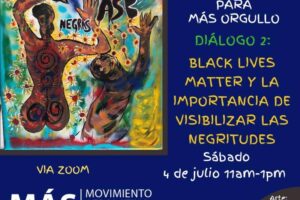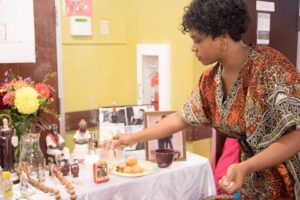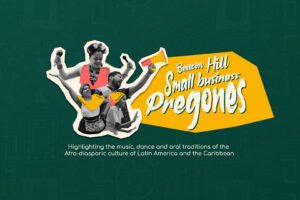What has the “black” and “brown” unity been like in the past? How does it look today? How do we build unity and solidarity today? How do we begin to understand the common histories between Blacks and Latinos? What is the role of the medium in creating stereotypes against black and Latino people? These are some of the questions posed by Seattle Central College students during a discussion titled “From Black Panthers to Brown Berets: A Dialogue on Black and Brown Unity” at SCC on May 24, 2016. MORE was invited to this conversation.

Anecdotes from childhood, stories of healing, personal confessions, more questions, pain, joy, discoveries, love… all of this shaped the (very short) two-hour conversation in which we all (a quite diverse group) explored the strengths dividing and unifying efforts throughout history.
For MÁS organization focused on Latinos of African descent, this conversation is more than relevant since for many of us there is no separation between “blacks” and “browns” (Latinos). One can be Black and Latino, and this perceived division is one of the ways Afro-Latinos have been “made invisible” in this country. Furthermore, many Afro-Latino immigrants in the United States settled in neighborhoods where there was a high concentration of African-Americans. They have lived their lives together and have created together. The roots and practice of Hip Hop and Salsa music speak volumes about this as two of the many cultural expressions and products of this brotherhood.
Ignorance of the multiple paths that the diaspora has traveled, as well as the monopoly of history based on a Euro-central vision, has created the false conviction that we are different, that we do not exist and that we have been assimilated. That American blacks are only those born in the United States or those who can be directly related to the civil rights rebellion processes that have occurred in this country. It is not like this.
It is urgent and necessary to create spaces for dialogue, such as the one facilitated by the College Activity Board of Seattle Central College. For that we are very grateful. We need to dismantle that belief, which rises like invisible walls through the labels and categorizations that facilitate the process of invisibility. We need to meet and recognize ourselves from who we really are as a community. America is a continent, not a nation; the diaspora inhabits the entire American continent, from the south to the north.
Together we must raise our voices and tell our story to reclaim our heritage. We must know and honor our differences to strengthen our voice. We also need to recognize and celebrate our similarities. There are many barriers in our communities caused by the same racist forces, systems and beings. There is anger and frustration but there is also a lot of healing and movement going on to break down those barriers. It is very important that these dialogues occur on a regular basis to promote joint healing processes and jointly plan action strategies. Through shared healing and planning we will strengthen our camaraderie and become a more powerful and unified force to dismantle oppressive forces and systems against us.
Get involved. Let us all come together in unity in a great circle of peace to heal and strengthen. We are one Diaspora. United we are MORE.
The MORE team















